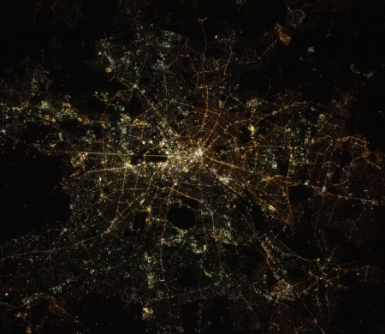Funding opportunity
At any given moment, while one half of the Earth is illuminated by the Sun, the other half is shrouded in darkness. Earth is considerably more challenging to observe during the night. Most traditional remote sensing satellites are designed to function in daylight conditions, and, as a result of power and thermal constraints, those capable of night-time operation, such as Synthetic Aperture Radars, typically follow dawn-dusk orbits (i.e., with LTANs or LTDNs around 6 AM-6 PM). Consequently, despite the abundance of valuable information that the night-time presents, many nocturnal events and phenomena go unmonitored.
While night-time imaging is not a new concept, the availability of medium and high-resolution commercial datasets in both mid and thermal infrared is relatively recent. Previously, such data was either low resolution or confined to defence applications.outside the scope of commercial operations. High-resolution commercial operators in the infrared spectrum have only recently begun providing data to the general public.
The challenge
The scope of the proposed feasibility study activity is to assess the technical feasibility and commercial viability of innovative satellite-based downstream services and solutions leveraging on space-based night-time datasets for diverse vertical sectors.
Topics of relevance
The applications facilitated by the detection and monitoring of night-time events and phenomena span a wide range of sectors and cater to various user segments. Potential domains include but are not limited to:
- maritime
- environmental
- forestry
- natural resources management
- smart cities
- financial institutions, and the
- oil and gas industry
Value of space
Satellite night-time imagery must be used in all Feasibility Studies under this call.
What we look for
The Open Competition call “The Dark Side of the Earth” promotes the development of new downstream applications that exploit existing and/or upcoming space assets during night-time, mainly through the use of visible, and infrared datasets. The objective of the call is to:
- develop new downstream applications based on events/phenomena that can only be observed at night-time;
- develop new downstream applications based on events/phenomena that only occur at night-time;
- enhance existing downstream applications with high temporal resolution requirements through the use of night-time observations;
- consolidate the business plan for supporting an informed decision for investment in further activities and establish the roadmap for service implementation through a potential follow-on demonstration project.
What we offer
Up to 200.000 Euro (firm fixed-price), 80% funding of the total cost.
ESA tender information
Bidders shall submit their full proposals according to the procedure provided in ESA-STAR
How to apply
ESA-STAR Tendering
Authorisation of funding
All BASS member States
Webinar
A webinar is scheduled for 07/02/2024. Please sign up using the link at the top of the page.
Webinar guest speaker:
Alex Gow from SatelliteVu.



